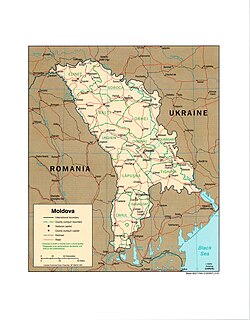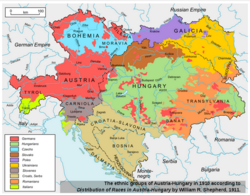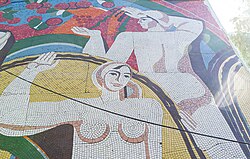
Marriage records in Moldova offer a fascinating glimpse into the country’s history, culture, and administrative evolution. From their origins in religious institutions to their modern-day management by civil authorities, these records not only serve as crucial legal documents but also provide valuable resources for genealogical and historical research.
Research your ancestors on MyHeritage
Historical development of marriage records in MoldovaHistorical development of marriage records in Moldova
The practice of recording marriages in Moldova dates back several centuries, rooted in the religious traditions of the region. During the medieval period, Moldova—situated at the crossroads of Eastern Europe and influenced by both Orthodox Christianity and neighbouring cultures—relied on church authorities to document vital events such as births, marriages, and deaths.
Church records (16th-19th century)Church records (16th-19th century)

Religious authorities were tasked with keeping records of births, marriages, and deaths as early as 1790 in Austro-Hungary and around 1830 in Wallachia and Moldavia. However, documentation from before 1850 is limited. Civil registration of vital events began across Romania in 1865, while Austro-Hungary implemented this system in 1895. Since the 18th century, various censuses have been conducted, many of which have been preserved. These censuses could focus on a specific county or city, target particular groups such as Jews or property owners, or cover the entire population. Most often, they were conducted for taxation purposes. In the absence of centralized civil administration, local Orthodox parishes maintained marriage records. These records typically included the names of the bride and groom, their parents, ages, and the date of the ceremony. These records, written in Old Church Slavonic or Romanian, reflected Moldova’s linguistic and cultural diversity.[1] Other religious communities, including Catholics, Jews, and Muslims, also kept their own marital registers.
Russian Empire period (1812-1917)Russian Empire period (1812-1917)
Following the annexation of Bessarabia (modern-day Moldova) by the Russian Empire in 1812, record-keeping practices were standardized under Russian administration. Civil registration systems began to emerge, although religious institutions continued to play a primary role in documenting marriages.
Soviet Era (1940-1991)Soviet Era (1940-1991)

With the establishment of Soviet rule in 1924 as a part of Ukrainian SSR , civil registration became mandatory. Marriage records were maintained by state-run offices, marking a significant shift from religious to secular oversight. These records were written in Russian and reflected the centralized bureaucratic practices of the USSR. This shift was part of a broader Soviet effort to secularize society and reduce the influence of religious organizations.
Marriage records during this period were meticulously documented and stored by state-run offices, known as ZAGS (Civil Acts Registration Offices). These records included detailed information about the spouses, such as their full names, birthdates, places of residence, and occupations, as well as the date and location of the marriage. Despite the centralized system, the turbulent political climate of the Soviet era, including World War II and subsequent deportations, led to disruptions in record-keeping. Some archives were damaged or lost during these periods, complicating modern efforts to access comprehensive historical data.
Post-Soviet Period (1991-present)Post-Soviet Period (1991-present)
After gaining independence in 1991, Moldova retained its Soviet-era civil registration framework, later modernizing it to align with European standards. Today, marriage records are maintained by the Civil Status Service (Serviciul Stare Civilă) under the Ministry of Justice. Modern records are maintained in Romanian, reflecting the nation’s cultural identity.
Structure of marriage records in MoldovaStructure of marriage records in Moldova
Personal Information of SpousesPersonal Information of Spouses
- Full names of the bride and groom.
- Dates and places of birth.
- Places of residence at the time of marriage.
- Occupations or professions.
Marriage DetailsMarriage Details
- Date and place of the marriage ceremony.
- Names and positions of the officiants (e.g., civil registrar or religious clergy, if applicable).
Family InformationFamily Information
- Names of parents for both the bride and groom.
- In some cases, additional family details, such as the presence of witnesses or guardians.
Accessing Marriage Records in Modern MoldovaAccessing Marriage Records in Modern Moldova
Today, marriage records in Moldova are maintained both in physical archives and digital formats. Their accessibility depends on the age of the record and its location within the administrative system.
Civil Status ServiceCivil Status Service
The Civil Status Service manages contemporary marriage records, which include details such as the names and birthdates of the spouses, the date and place of marriage, and sometimes additional information such as witnesses or officiants.
State archivesState archives
Older records, typically those over 75 years old, are transferred to regional or national archives. These records are invaluable for historians and genealogists, as they often provide insights into familial and social structures over time. The State Archive of Moldova holds a vast collection of vital records.
Challenges in researching marriage records in MoldovaChallenges in researching marriage records in Moldova
Linguistic barriersLinguistic barriers
Older records are often written in archaic scripts or languages, including Old Church Slavonic, Romanian, or Russian.
FragmentationFragmentation
Historical upheavals, including wars and political changes, have led to the loss or fragmentation of some records. Researchers may need to consult multiple sources to piece together information.
Legal restrictionsLegal restrictions
Access to recent marriage records may be restricted due to privacy laws. Researchers must often demonstrate a direct relationship to the individuals in question or obtain special permissions.


